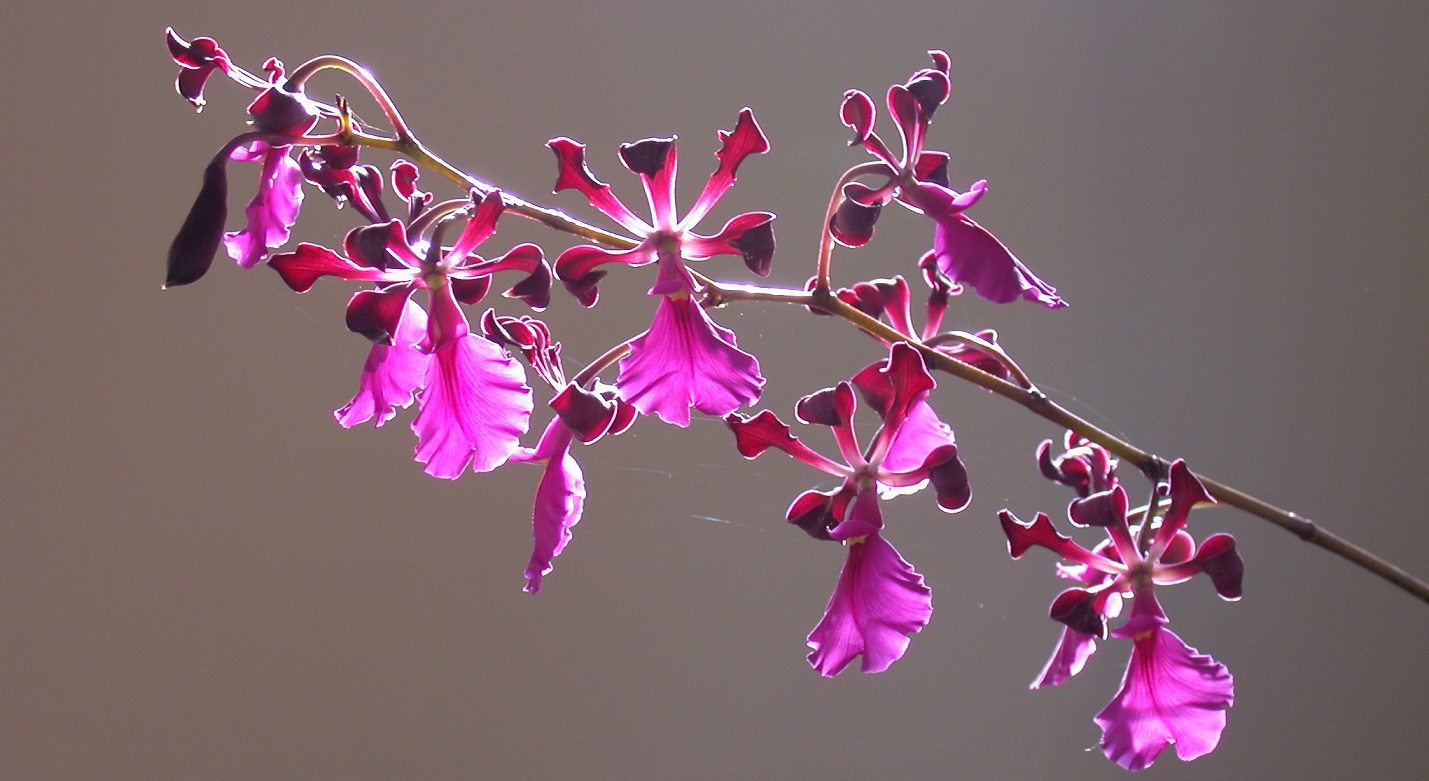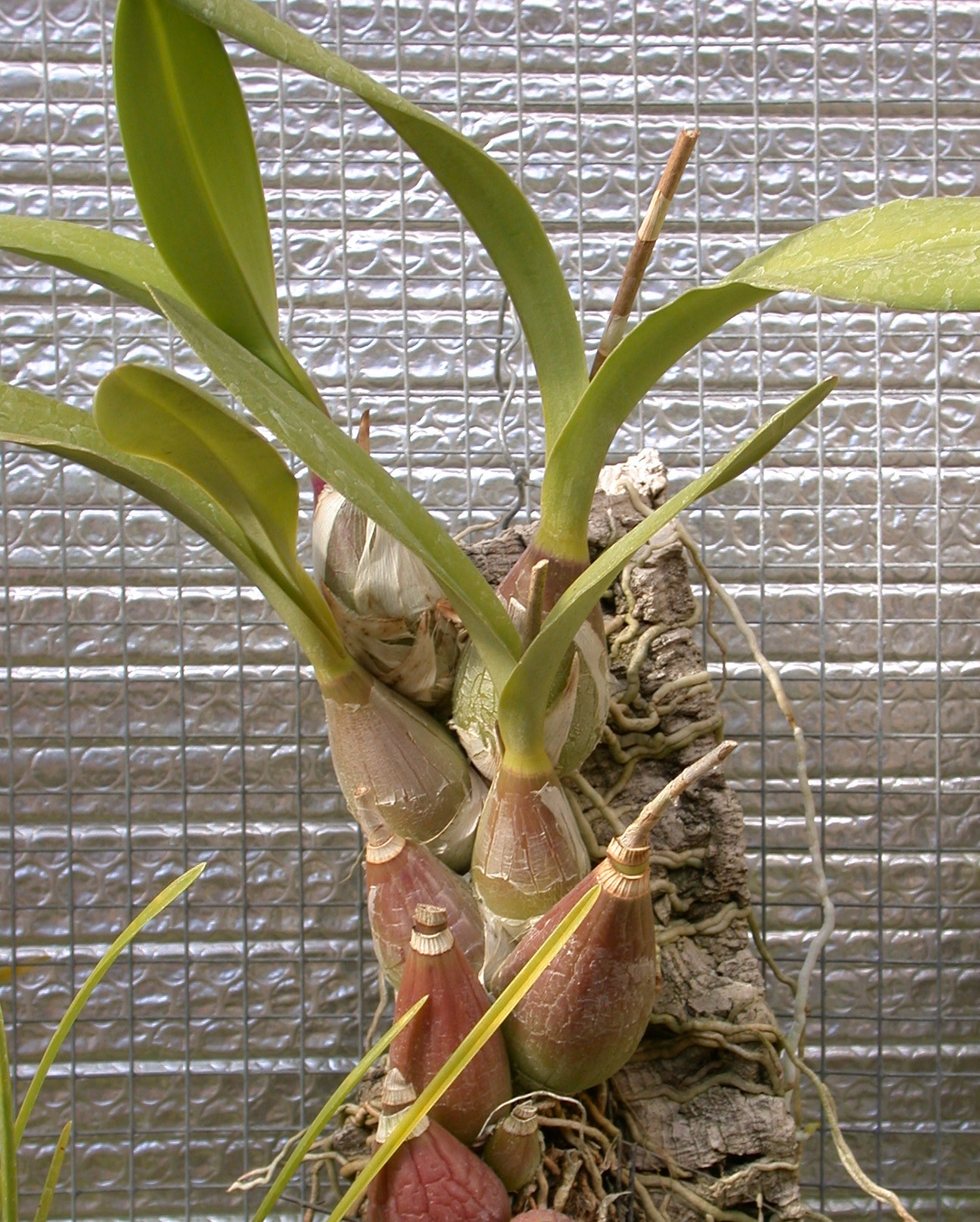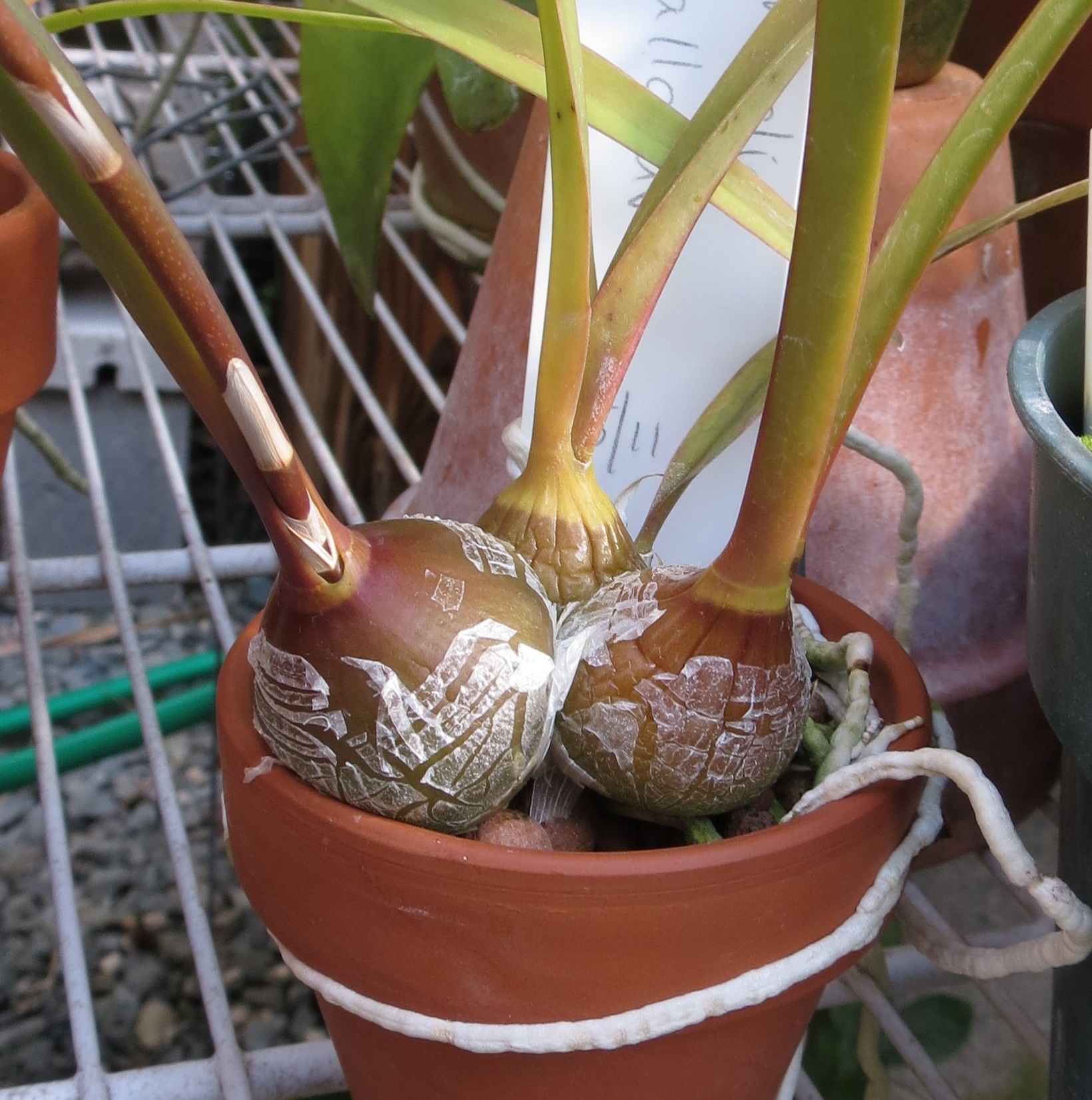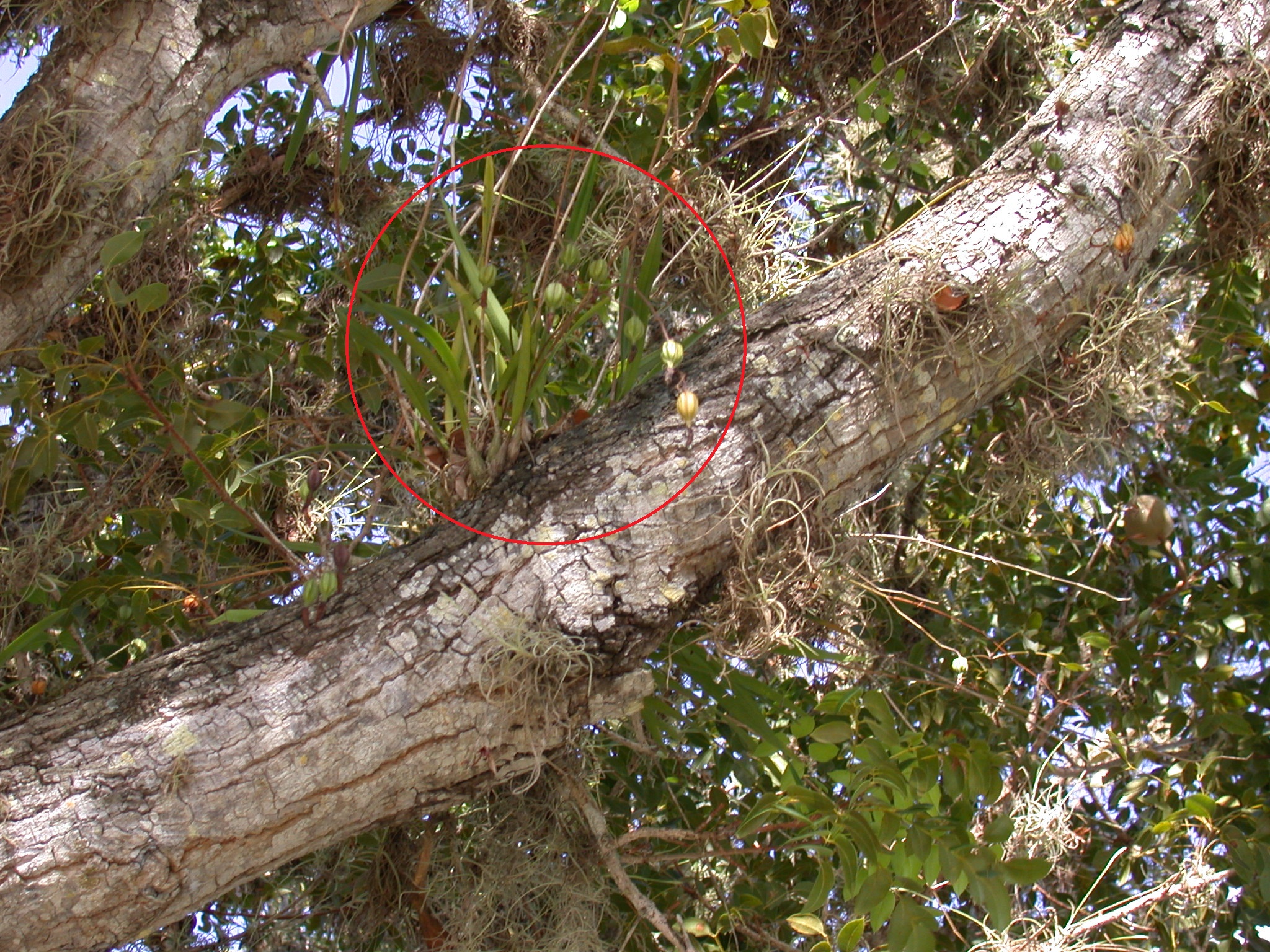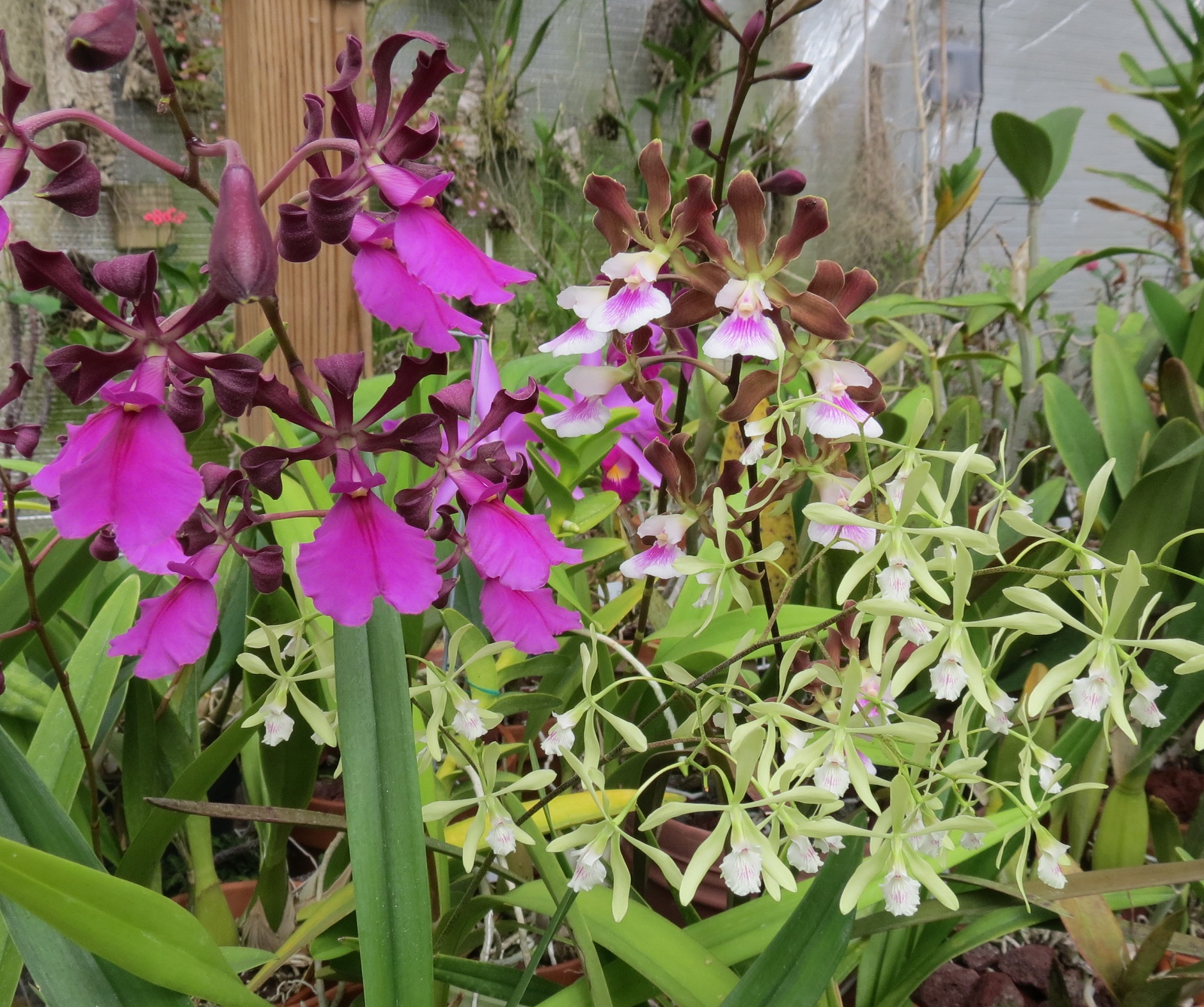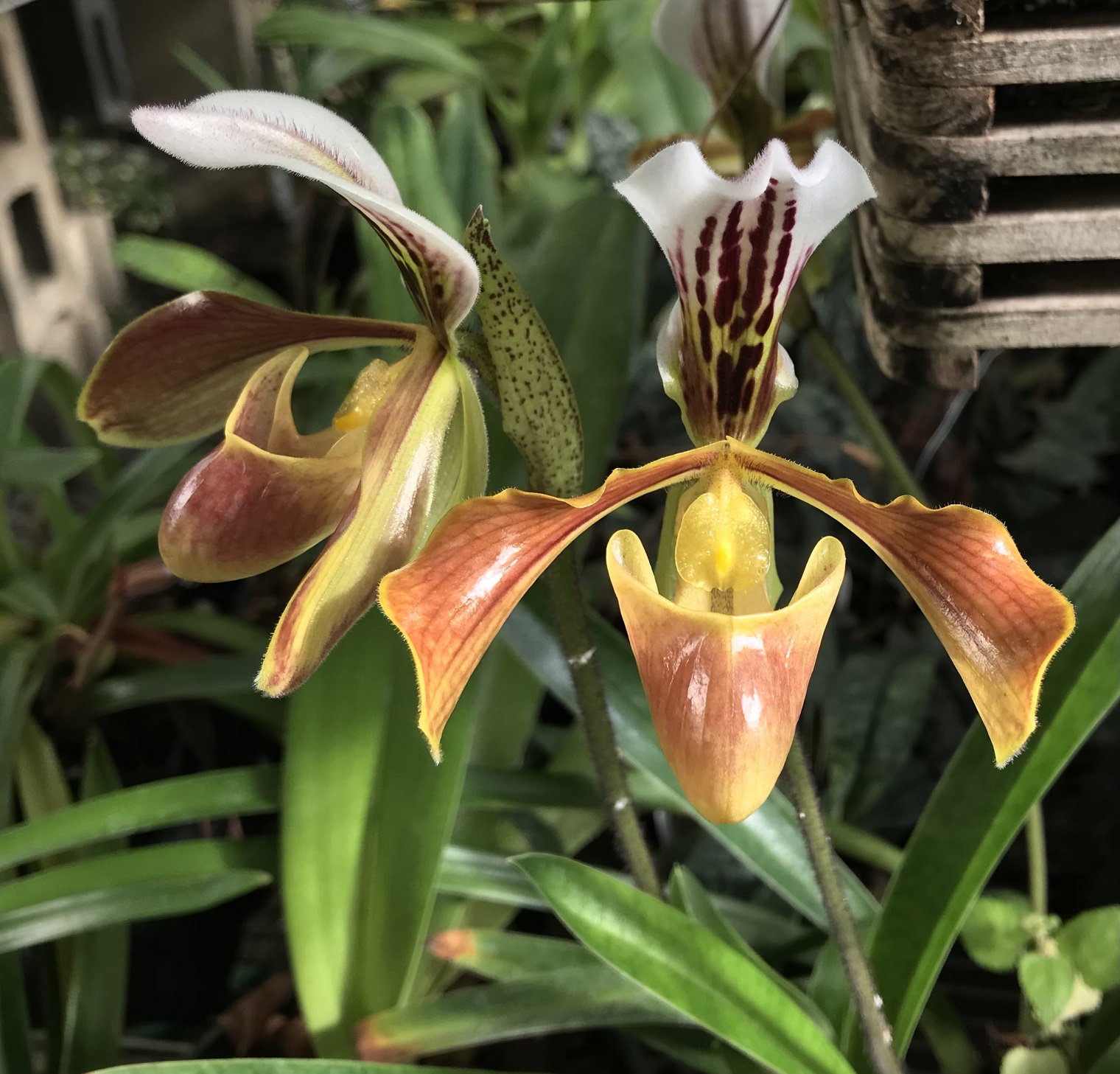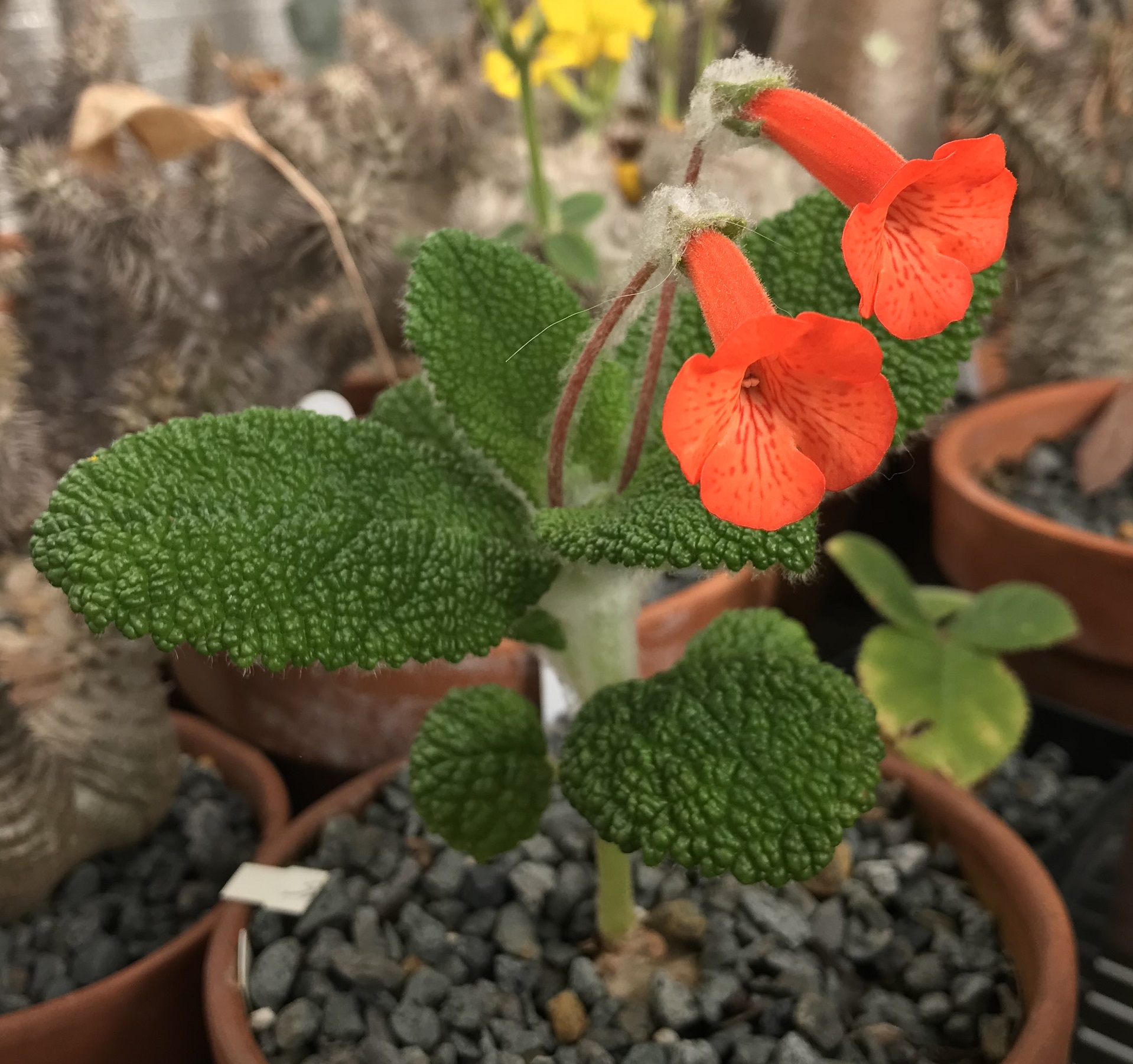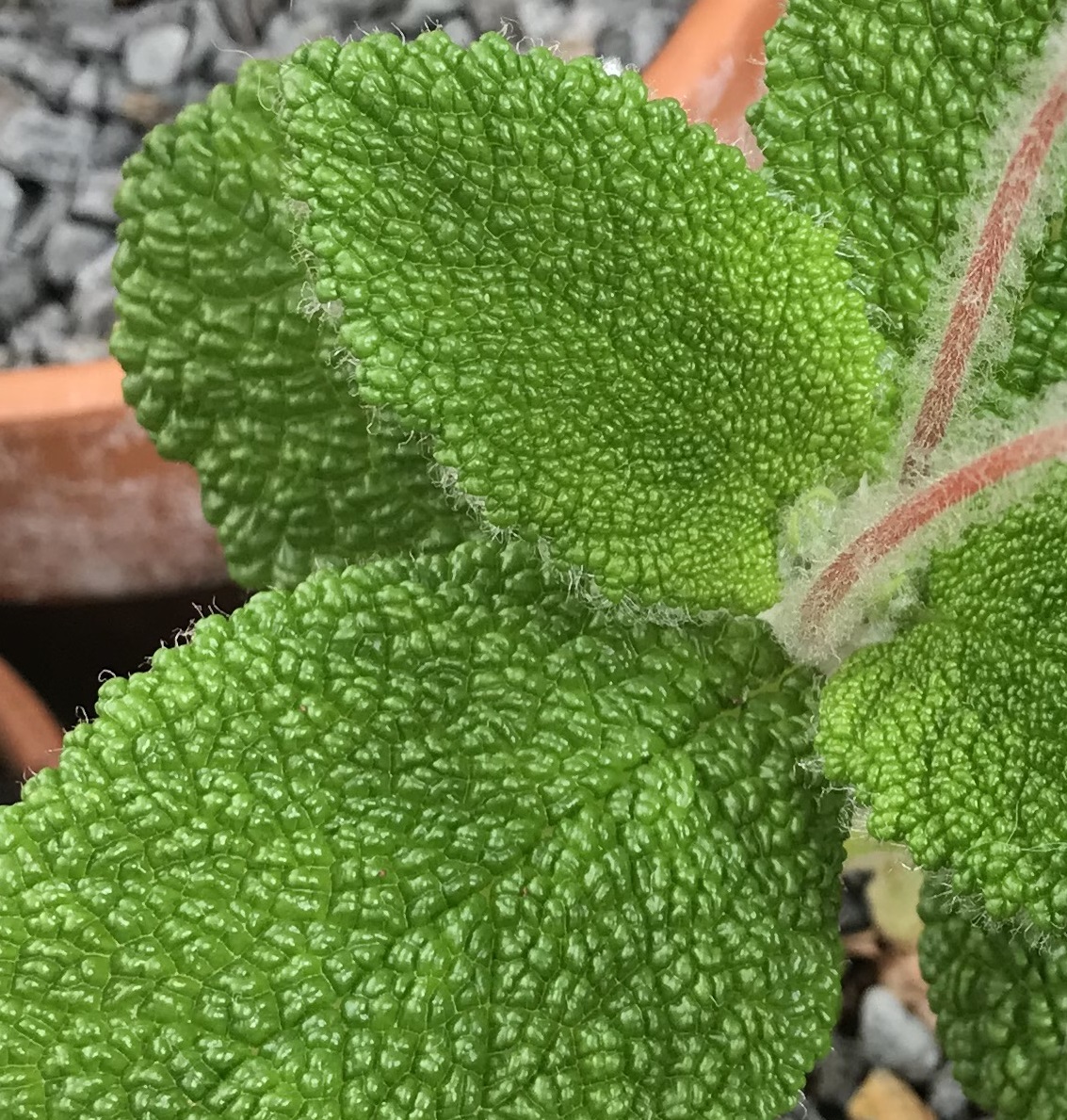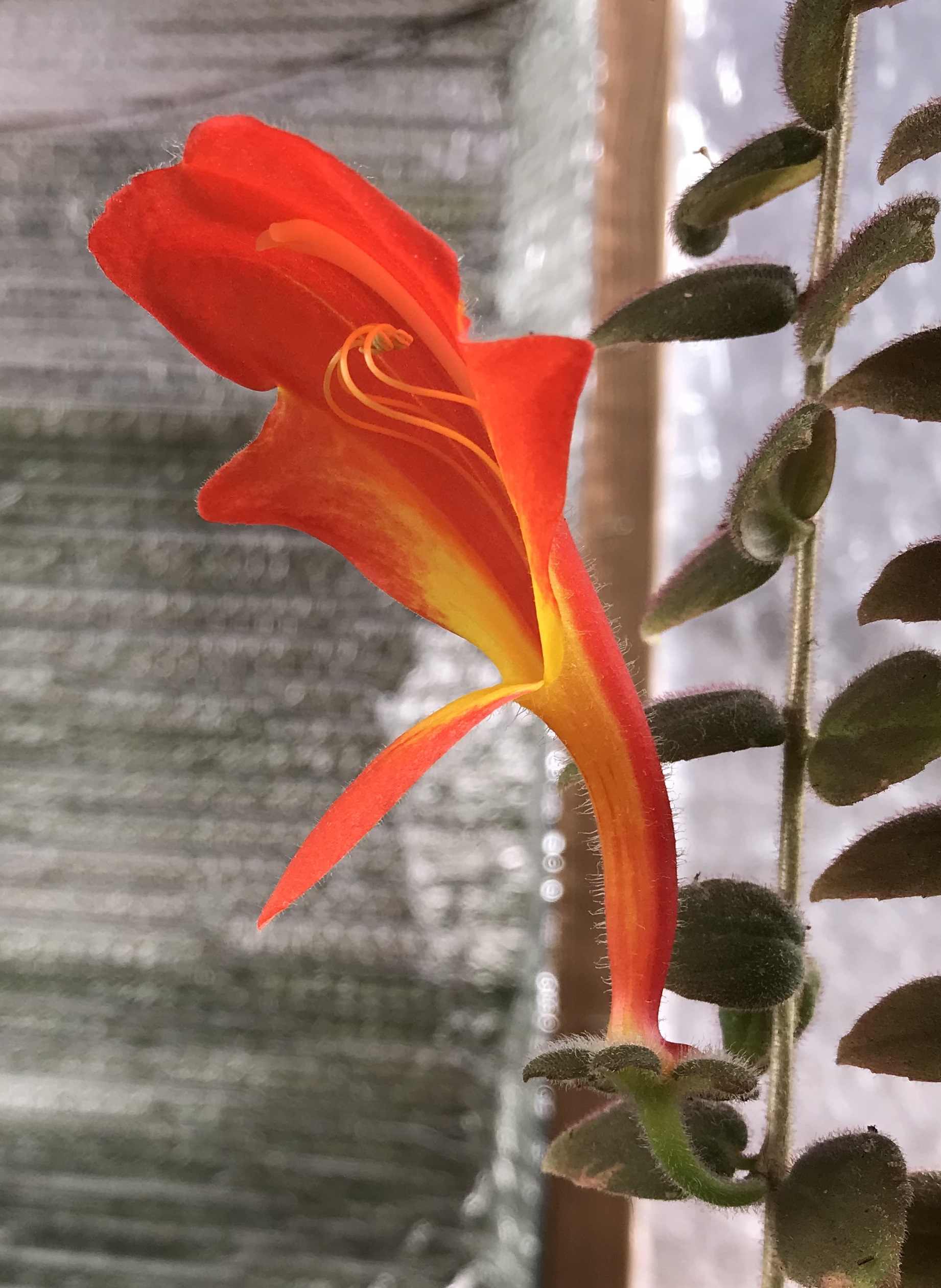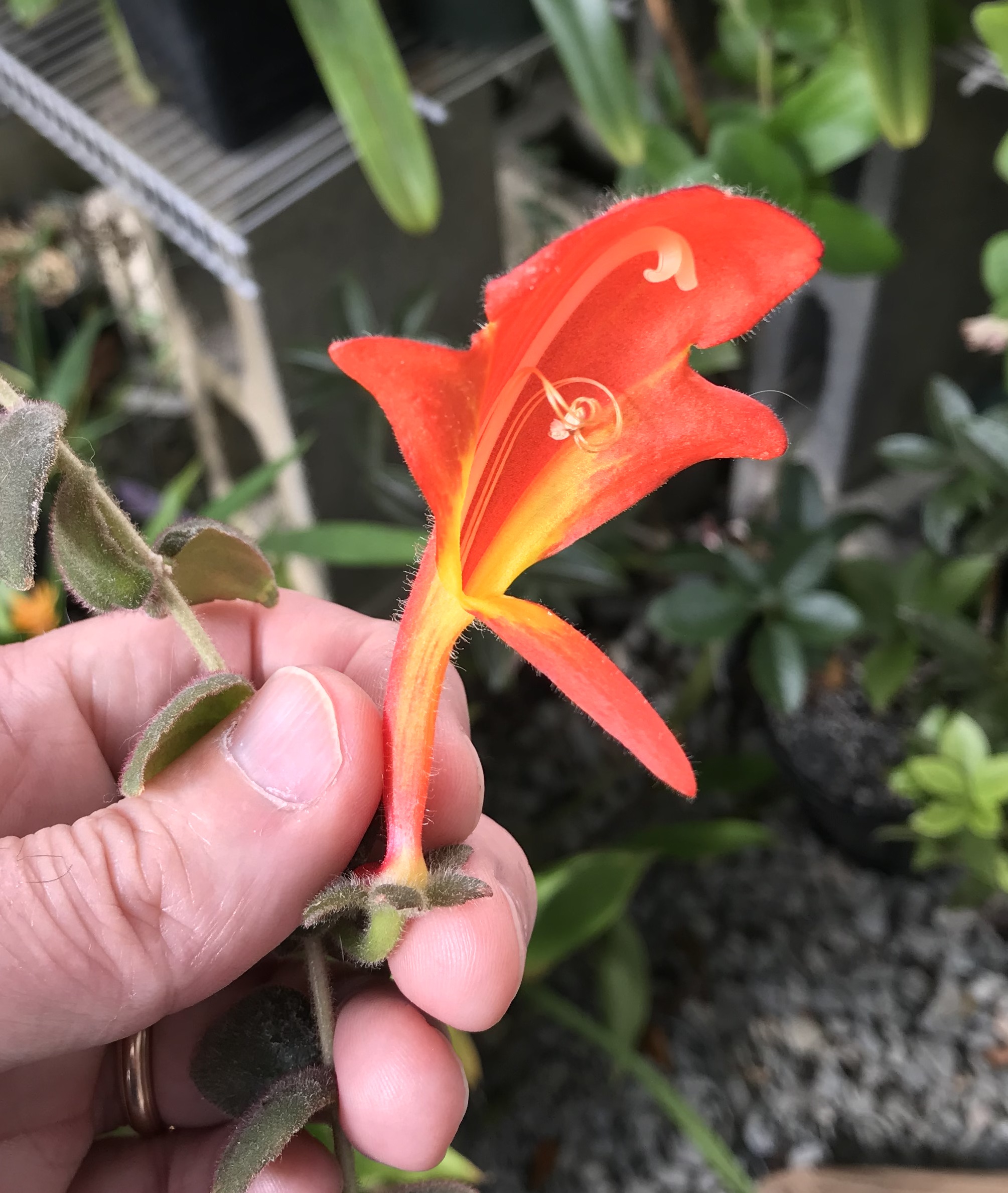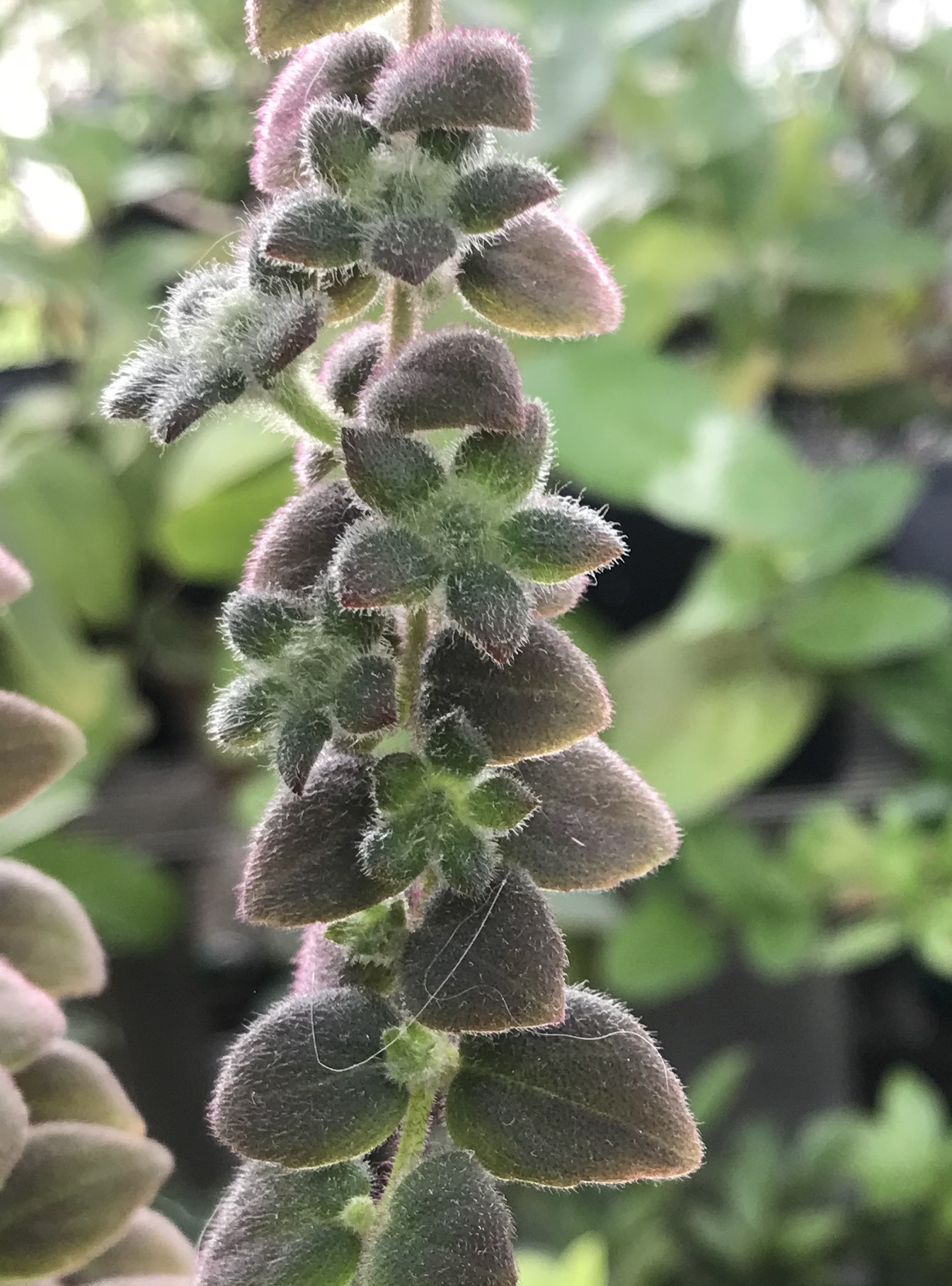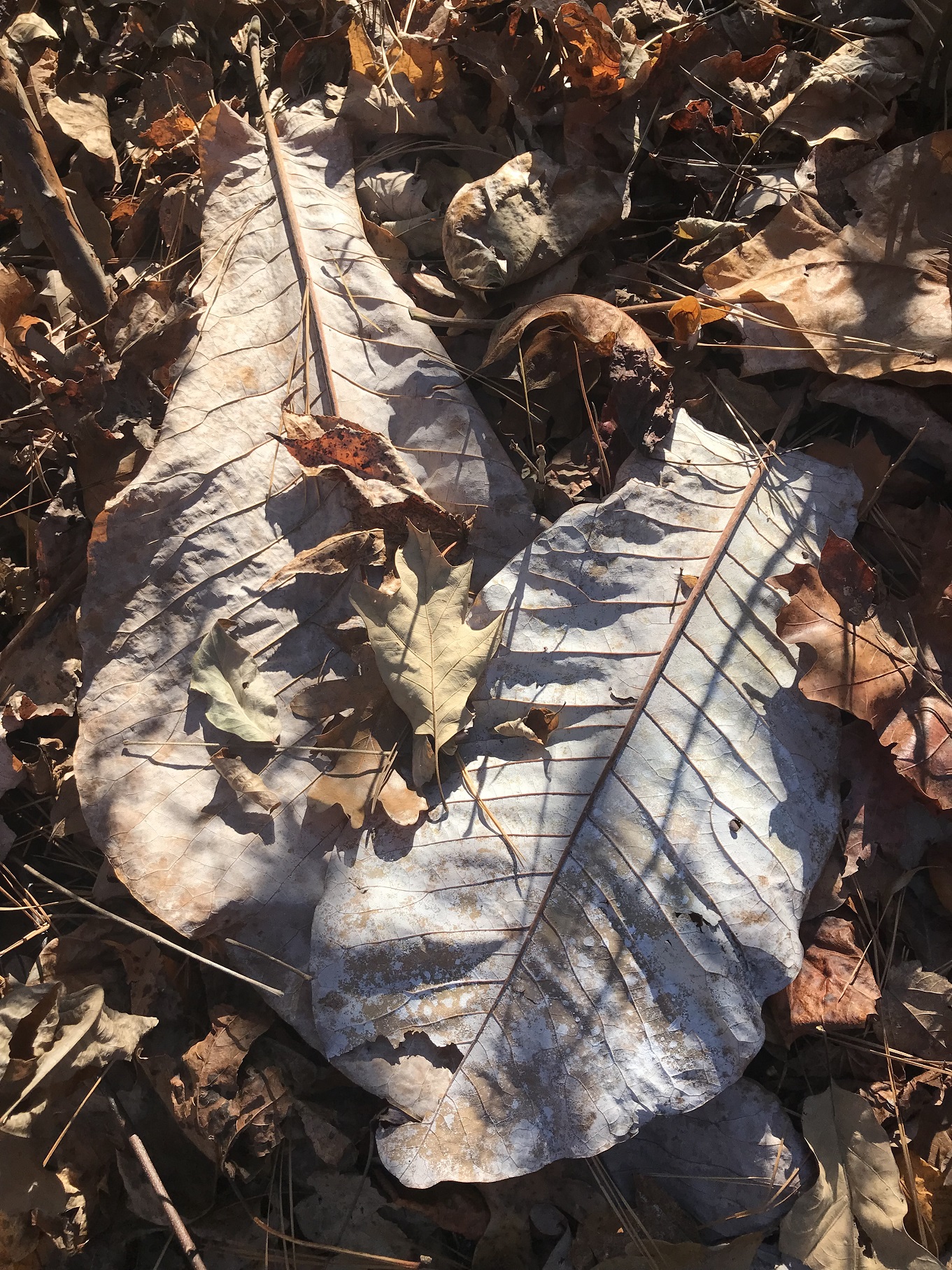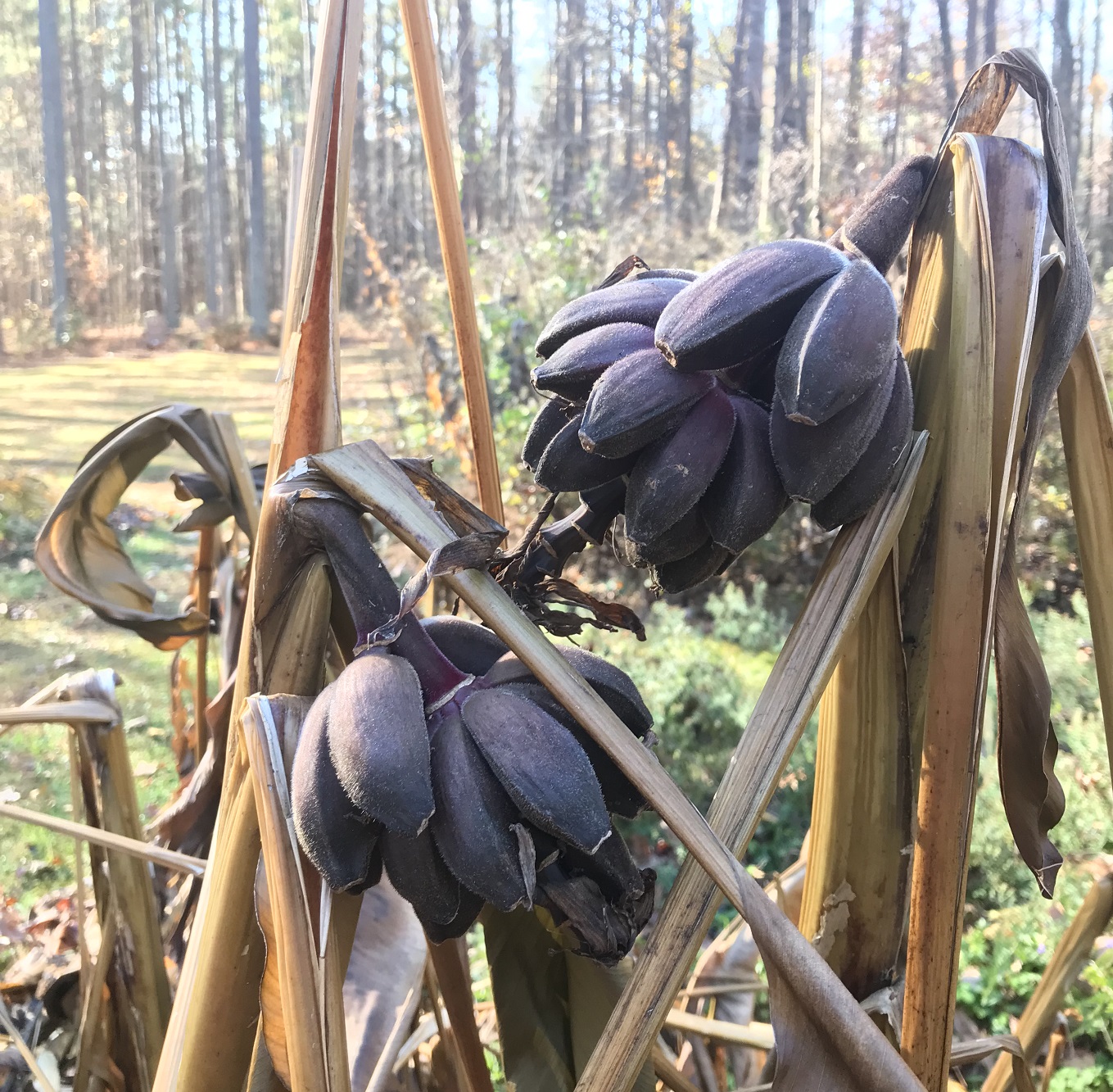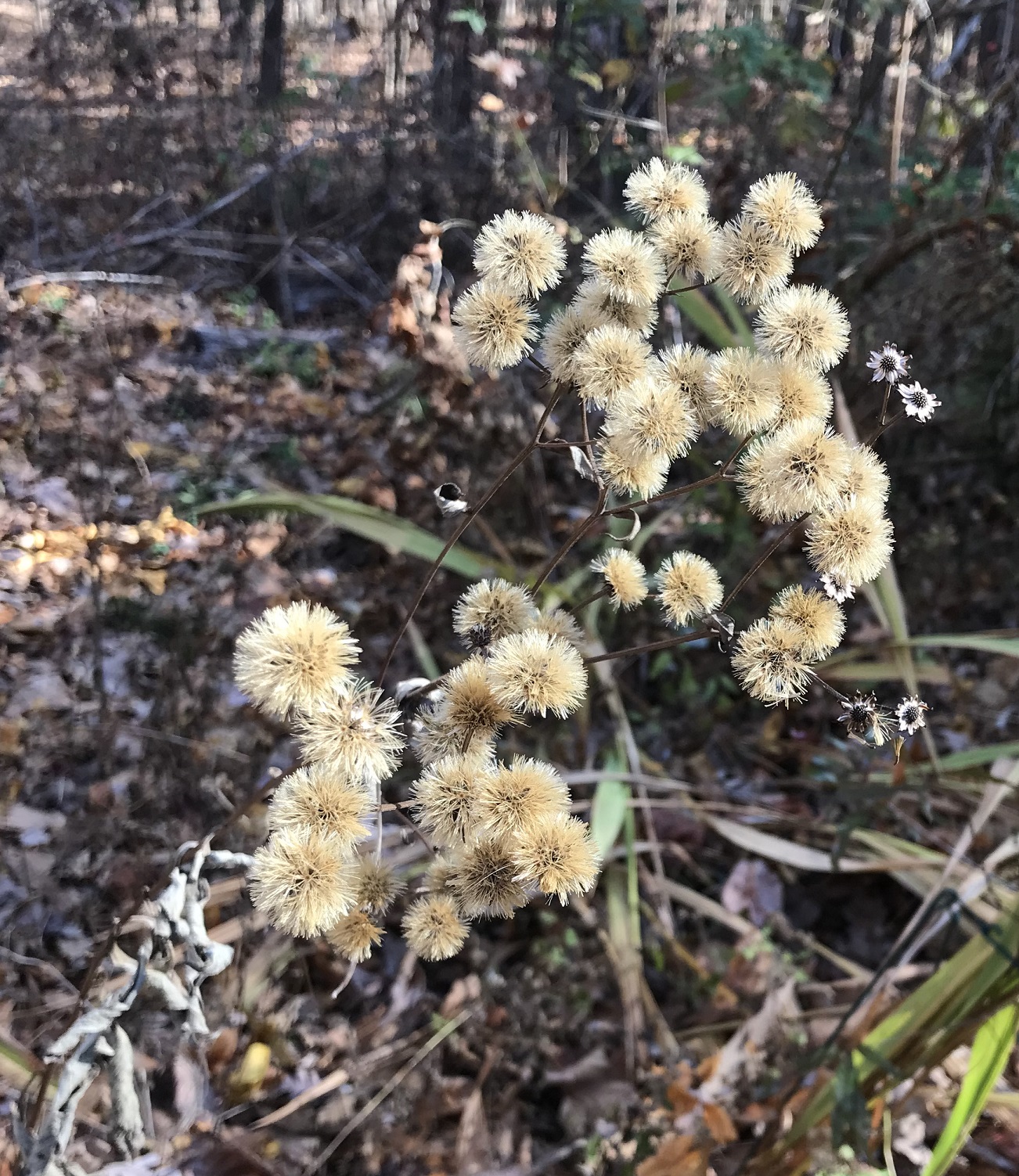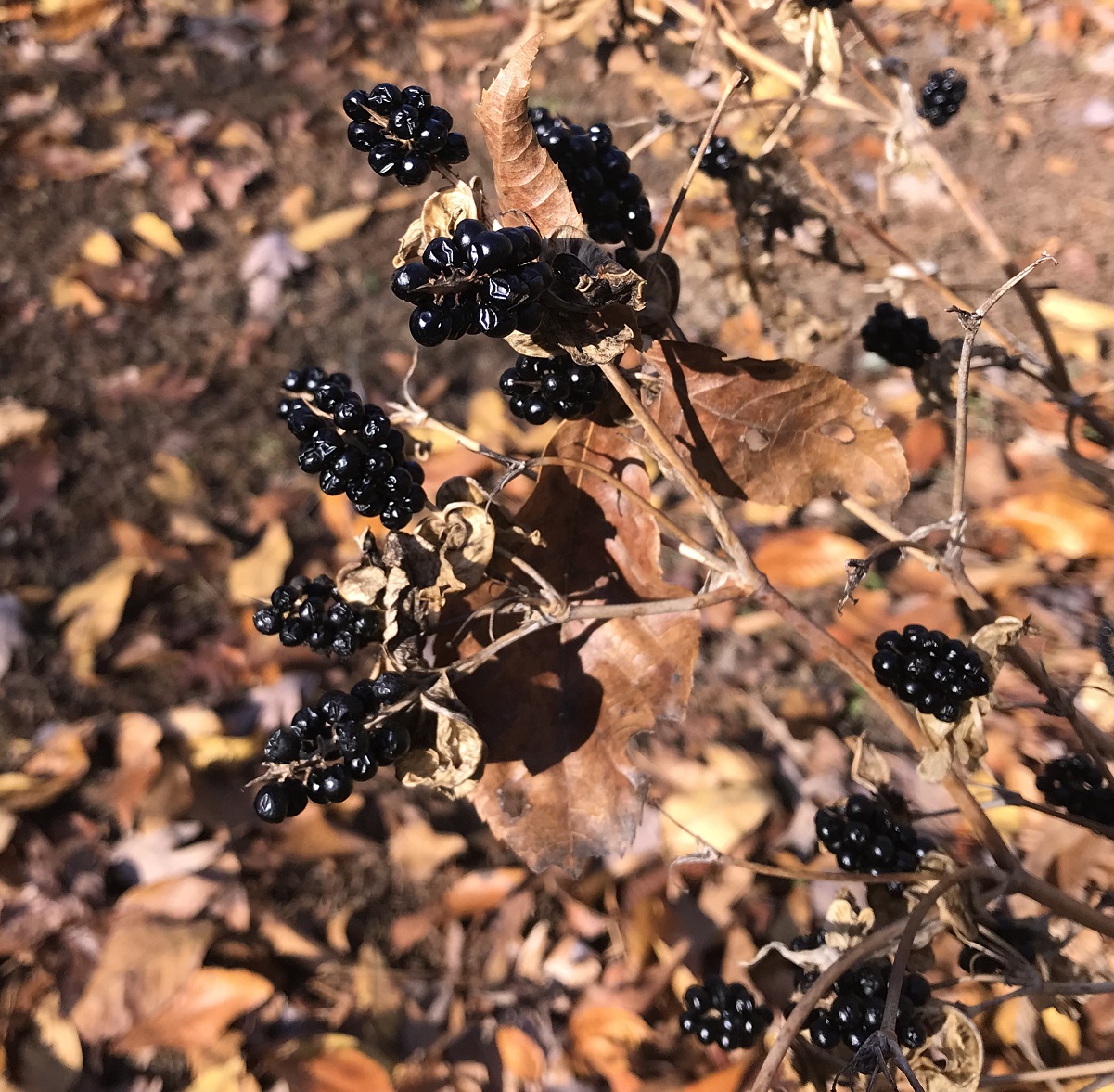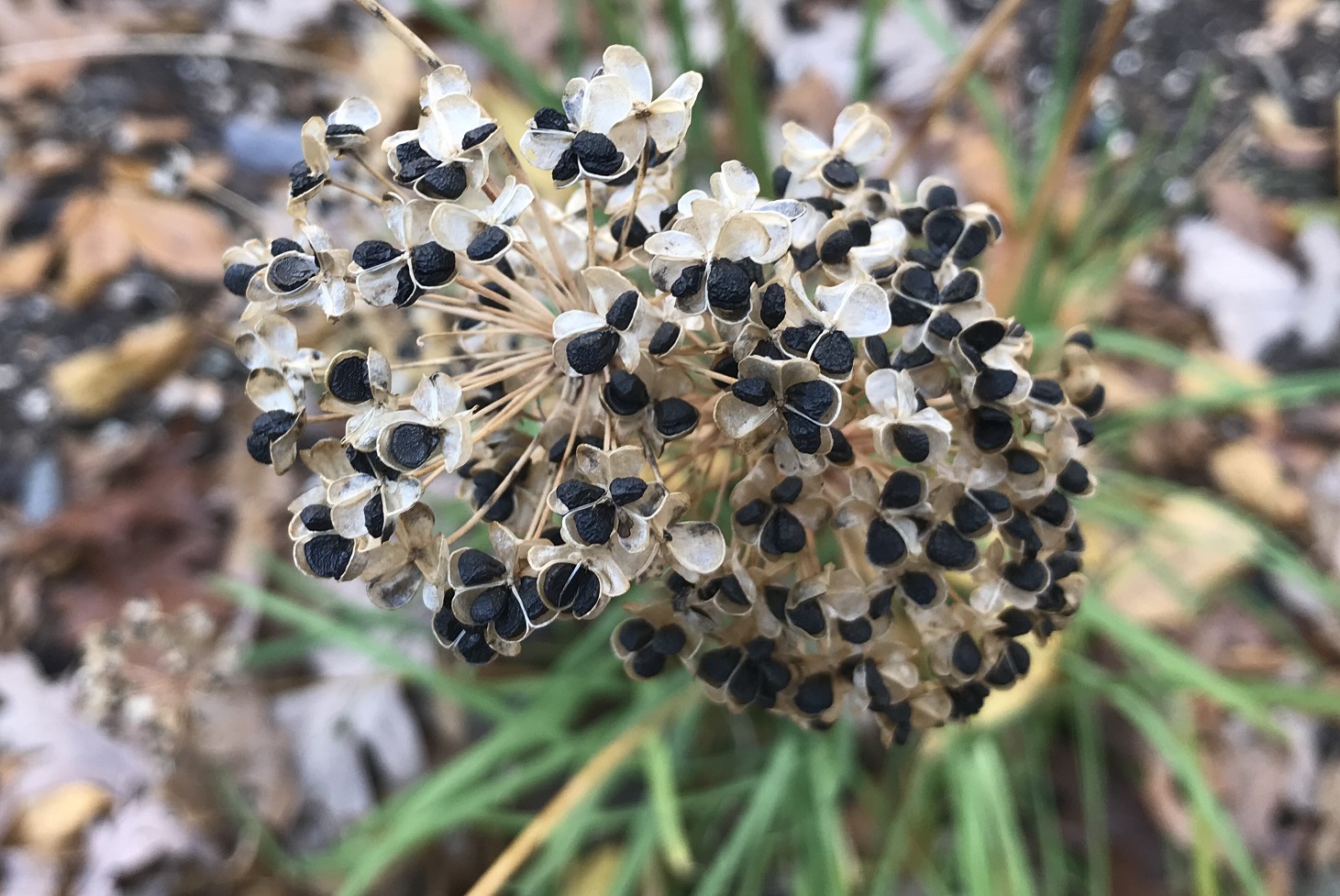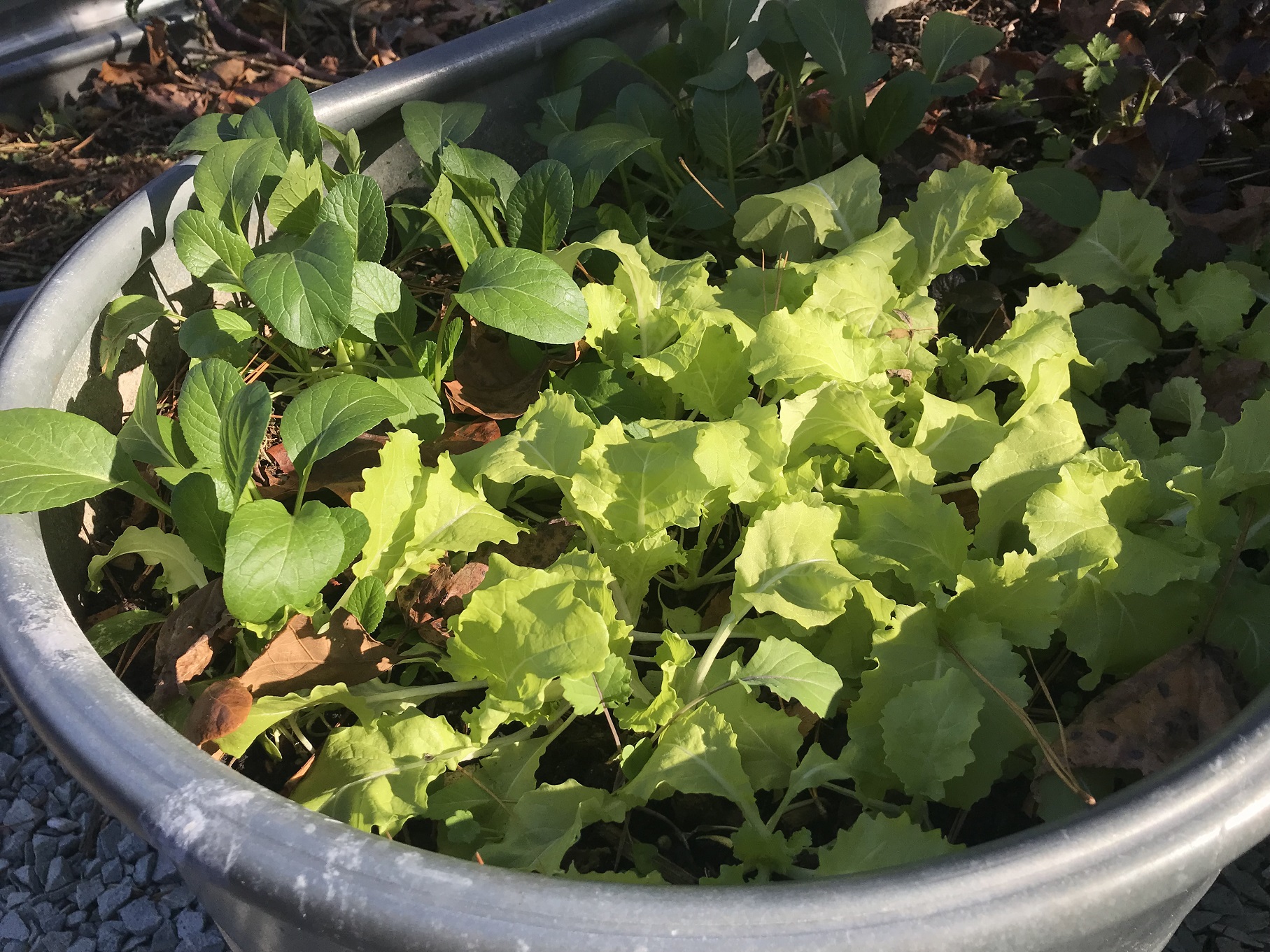
(Start at The Genus Encyclia–Part 1)
We woke this morning to frigid temperatures and about 2″ of snow, so this seems a perfect day to think about the Caribbean* Encyclia species. Instead of focusing on winter’s cold, imagine Encyclia tampensis growing at the edge of a tropical hardwood hammock on Sugarloaf Key, Encyclia plicata in a sun-baked Bahamian coppice, or Encyclia phoenicea in the Cayman Islands, not far from the beach. As suggested by these localities, most of the Caribbean Encyclia species are warm- to hot-growing and many can be grown well alongside cacti and succulents.
These species can be difficult to find at orchid nurseries, but a handful turn up from time to time as oddballs. I suspect you will more likely find them at nurseries in Florida, rather than on the west coast. Here are a few that are commercially available and are well worth growing.
*The Bahamas and Florida are not, technically speaking, in the Caribbean, but with respect to Encyclia biogeography, the Greater Antilles, Bahamas, and Florida can probably be considered a single region.
Encyclia tampensis
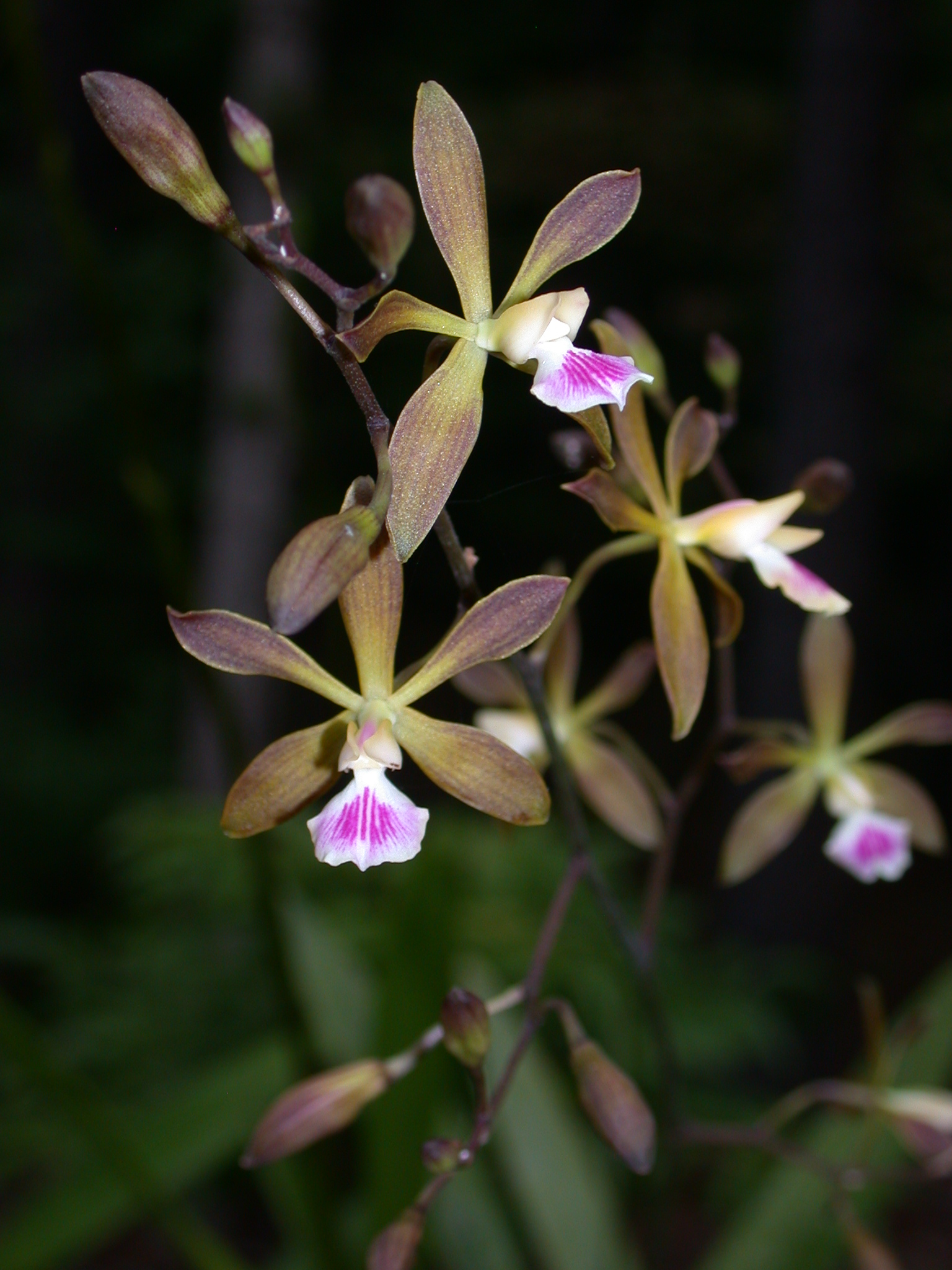
With a natural range encompassing southern Florida and the Bahamas, E. tampensis isn’t exactly a Caribbean species (but see above re: geography vs biogeography); however, it is definitely the most readily available of this group of orchids. Before it was legally protected, E. tampensis would have been easily obtained from the wild by commercial and hobbyist orchid growers in Florida. E. tampensis is a relatively small species with flowers that are cute, rather than beautiful. Both the normally colored form shown above and an alba form with white lip and green tepals are commercially available. The plants I have grown have a sweet honey-like fragrance during the day.
Encyclia phoenicea
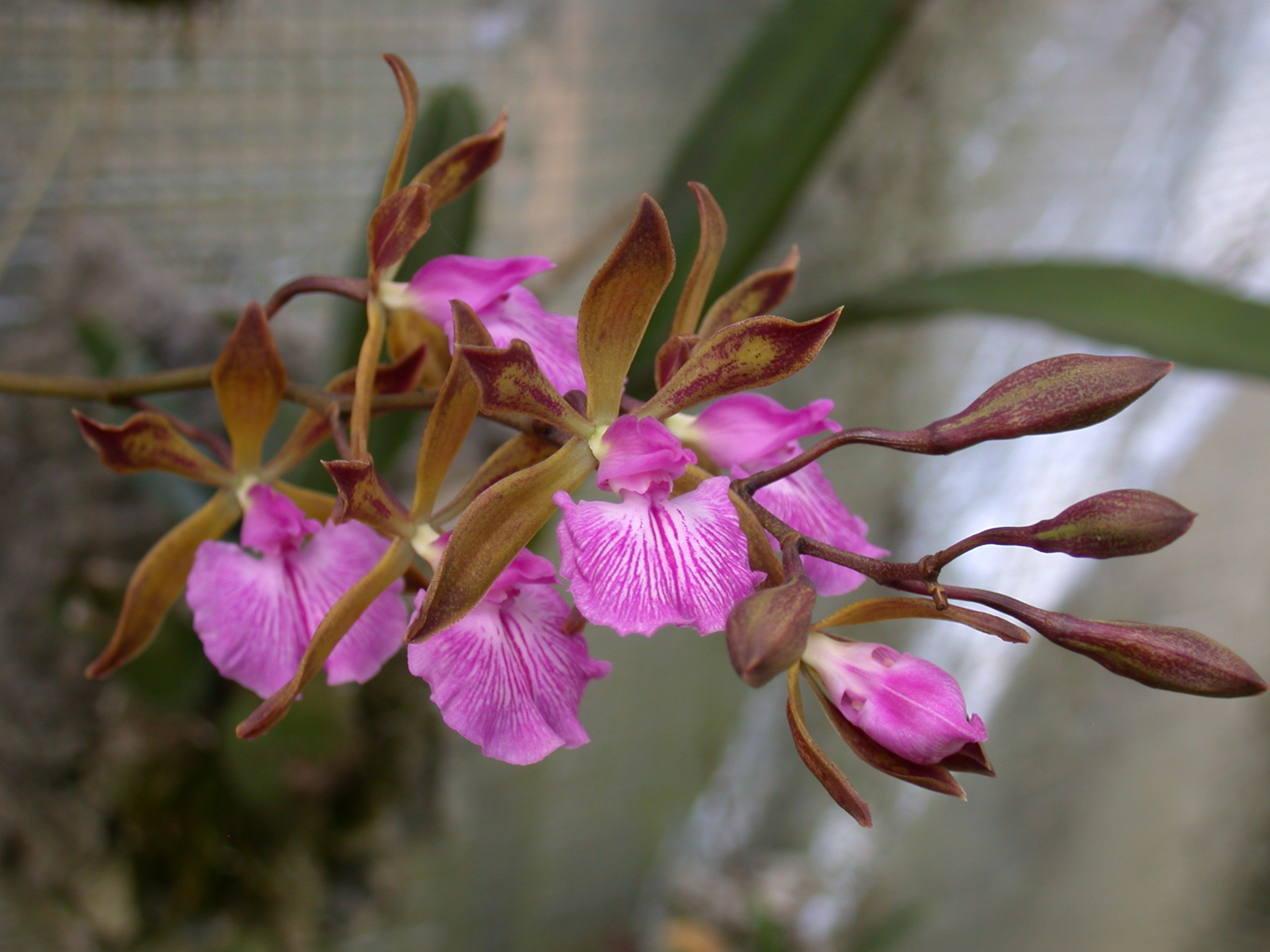
Possibly the finest of all the Caribbean species, Encyclia phoenicea from Cuba, the Cayman Islands, and Turks and Caicos has rigid, sword shaped leaves, glossy pseudobulbs, and beautiful purple flowers. It is most famous for its distinctly chocolate fragrance–I can confirm that the fragrance is fantastic! For obvious reasons, Cuban Encyclia species are often rare or absent from U.S. collections, but E. phoenicea was introduced to cultivation in the 1950s, before the revolution. More recently, offspring of plants originating in the Cayman Islands have also become available. Somewhere, and the source now escapes me, I heard that the early collections often had a folded lip, suggesting natural hybridization with E. plicata (see below), and the implication was that they were collected for their unusual appearance instead of more typical plants. Experiments in self-pollination reported by Ruben Sauleda and Pablo Esperon have indicated that Cuban E. phoenicea often carry genes from E. plicata and E. pyriformis, while those from the Cayman Islands are unhybridized [1].
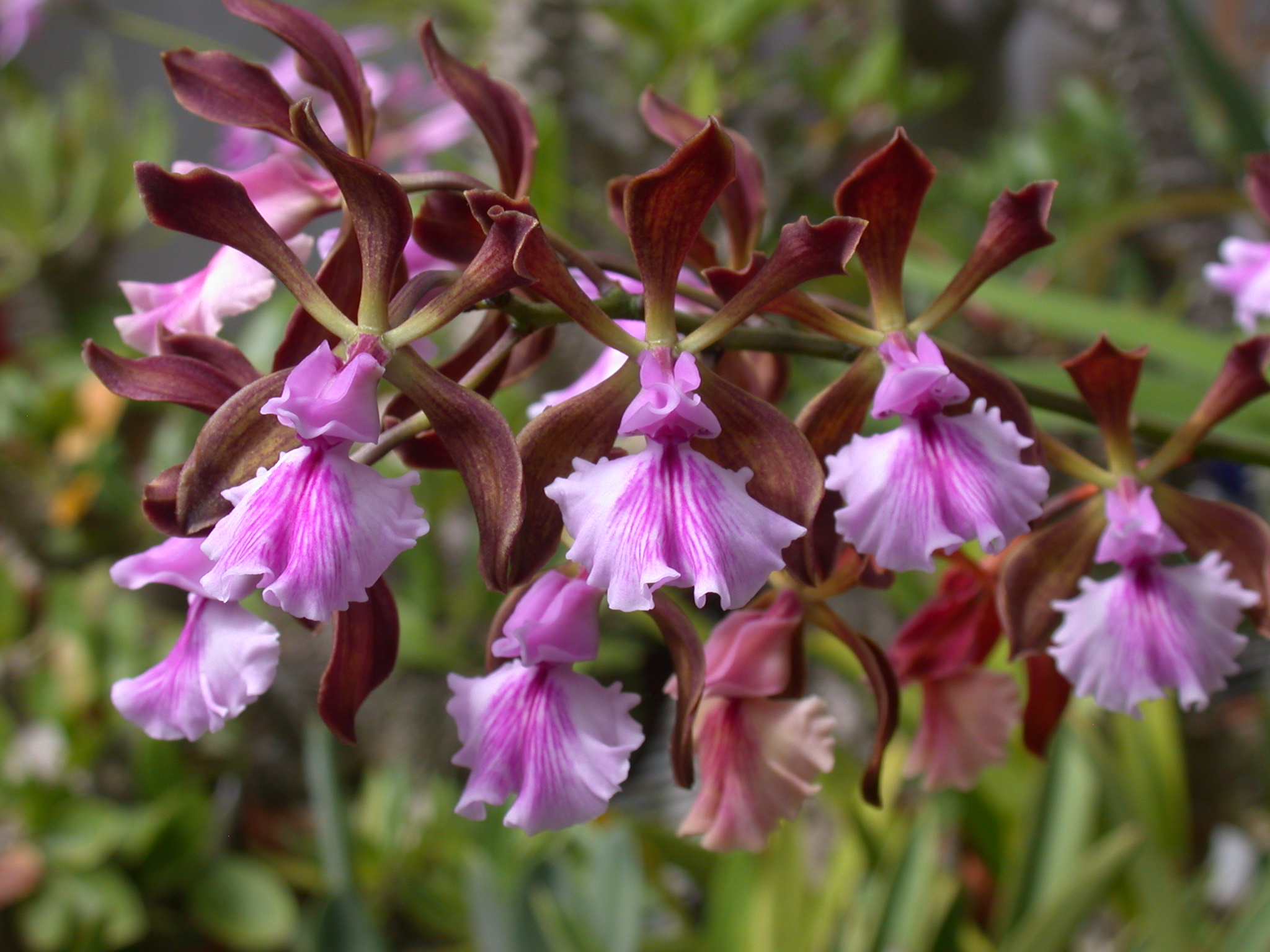
Encyclia plicata
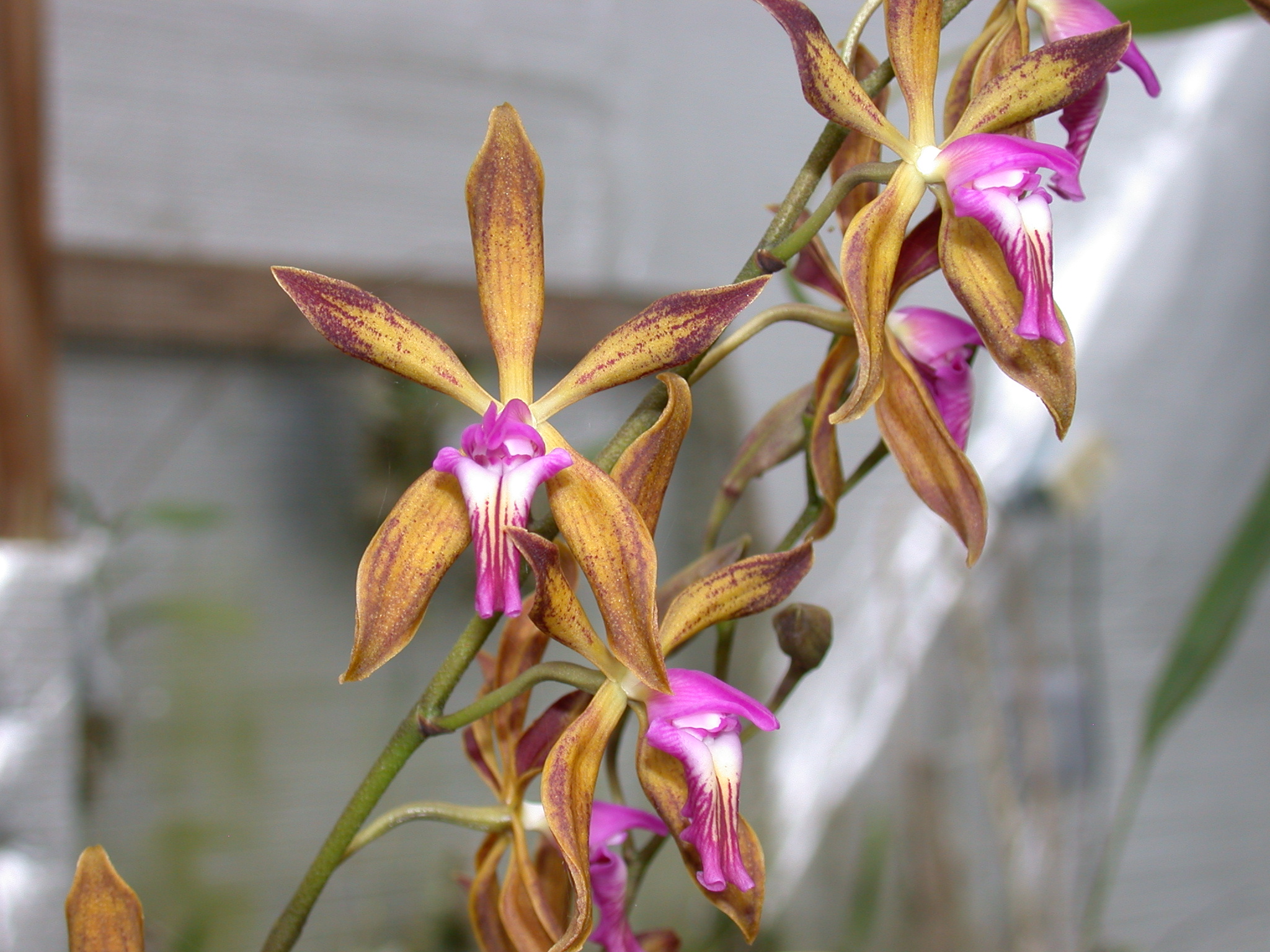
Encyclia plicata, from the Bahamas and Cuba, is clearly closely related to E. phoenicea. Its primary difference, from a horticultural point of view, is the folded lip, which gives the flowers the appearance of some strange bird of prey. The fragrance of this species is also distinct, at least among the plants I have grown. While E. phoenicea lived up to its common name of “chocolate orchid,” my E. plicata smelled exactly like root beer candy.
Encyclia rufa
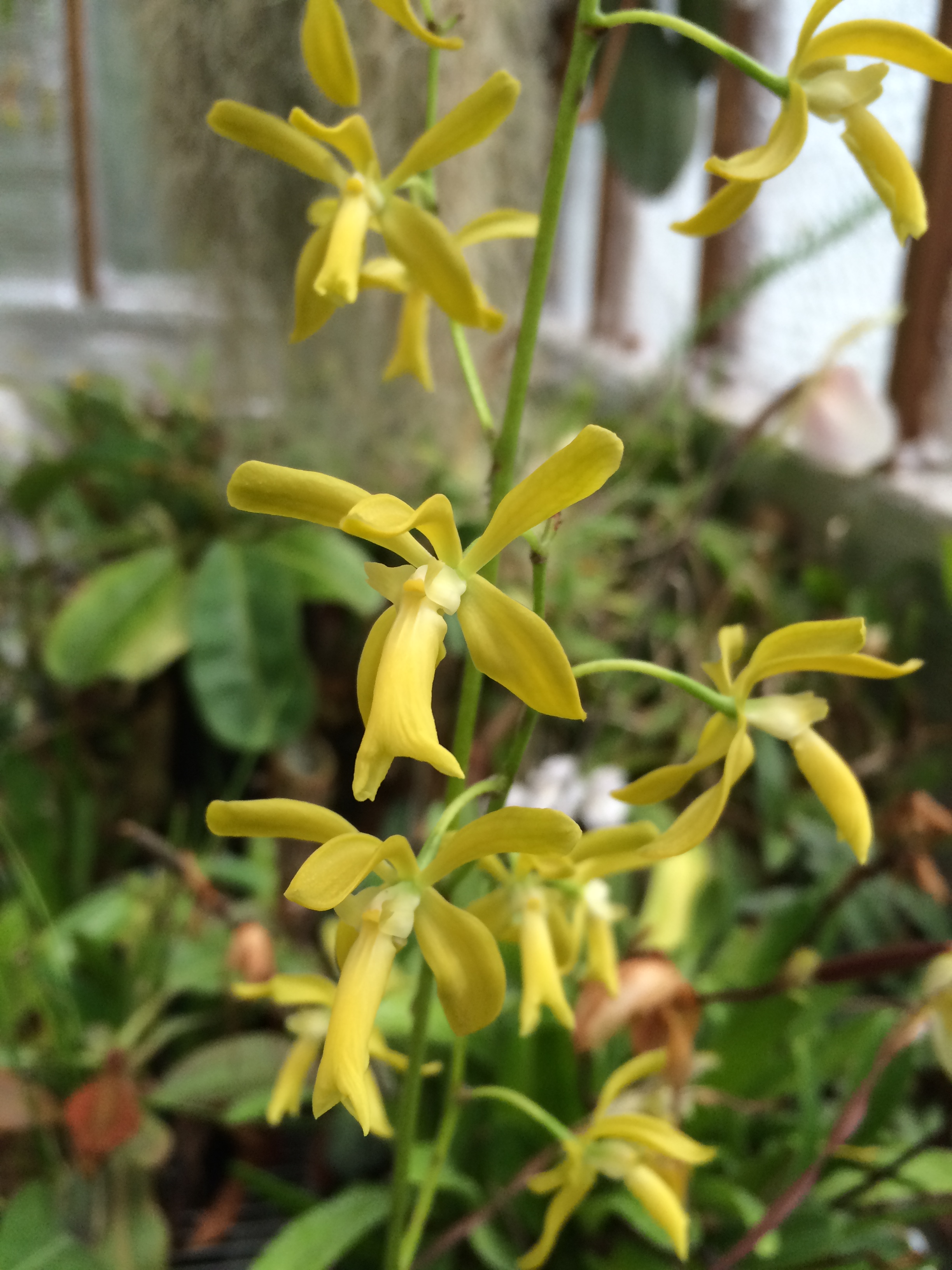
Encyclia rufa is also from the Bahamas. Its somewhat ungainly flowers are very strongly scented. I like the fragrance very much, but it is hard to describe beyond “fresh and floral”
Encyclia pyriformis
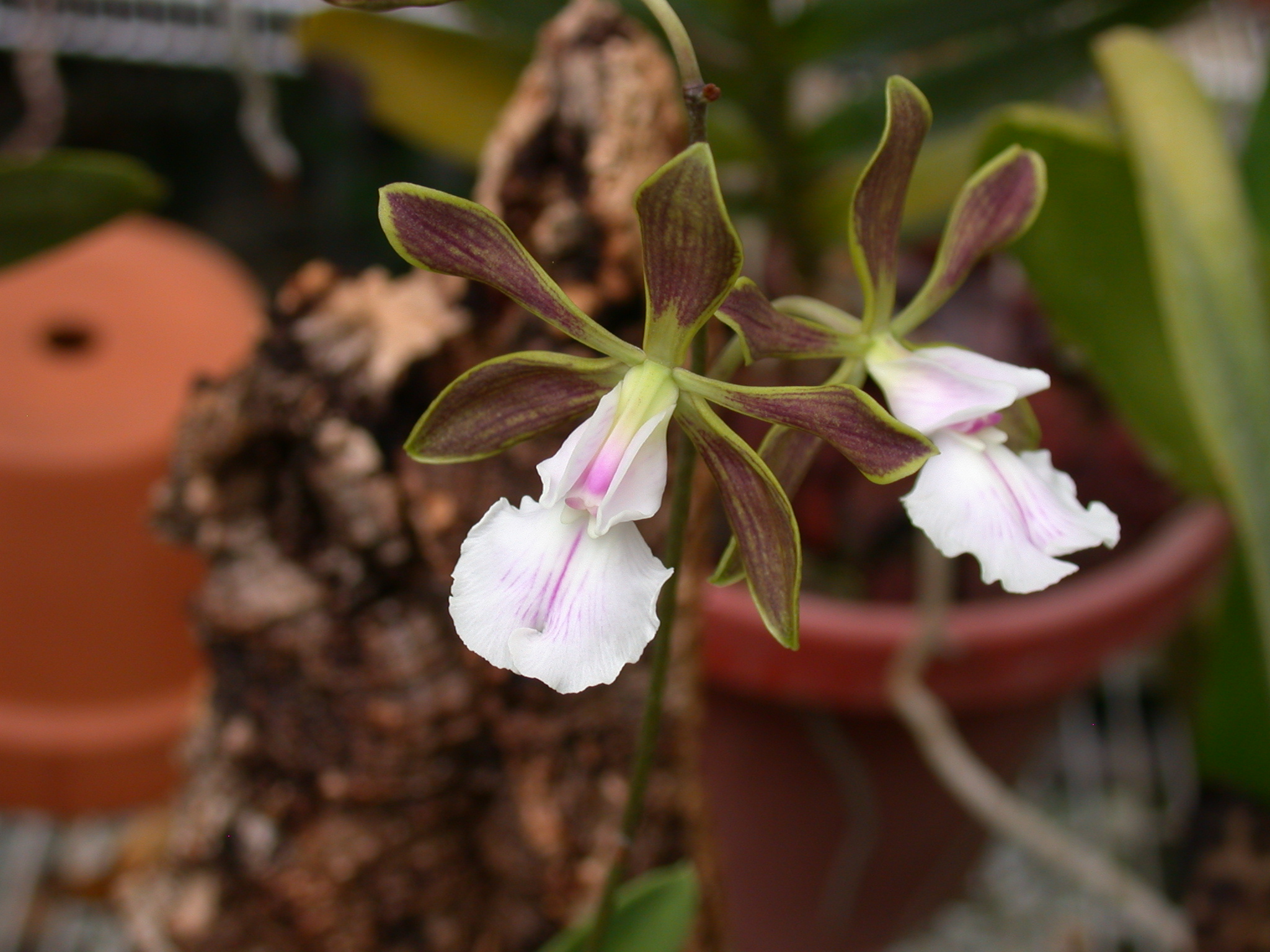
Encyclia pyriformis is another Cuban species, though it is much smaller than E. phoenicea or E. plicata. The clone that I grew had a chocolate fragrance almost identical to that of E. phoenicea.
Encyclia moebusii

Encyclia moebusii is unusual for the rich purple color that covers the entire flower rather than being restricted to the lip as in many other Encyclia species. Native to Cuba, it was described in 1985 and entered cultivation more recently. The plant shown came from Hamlyn Orchids, the nursery owned by Caribbean orchid specialist Claude Hamilton in Jamaica. My nose cannot detect any fragrance from this species.
Encyclia bocourtii
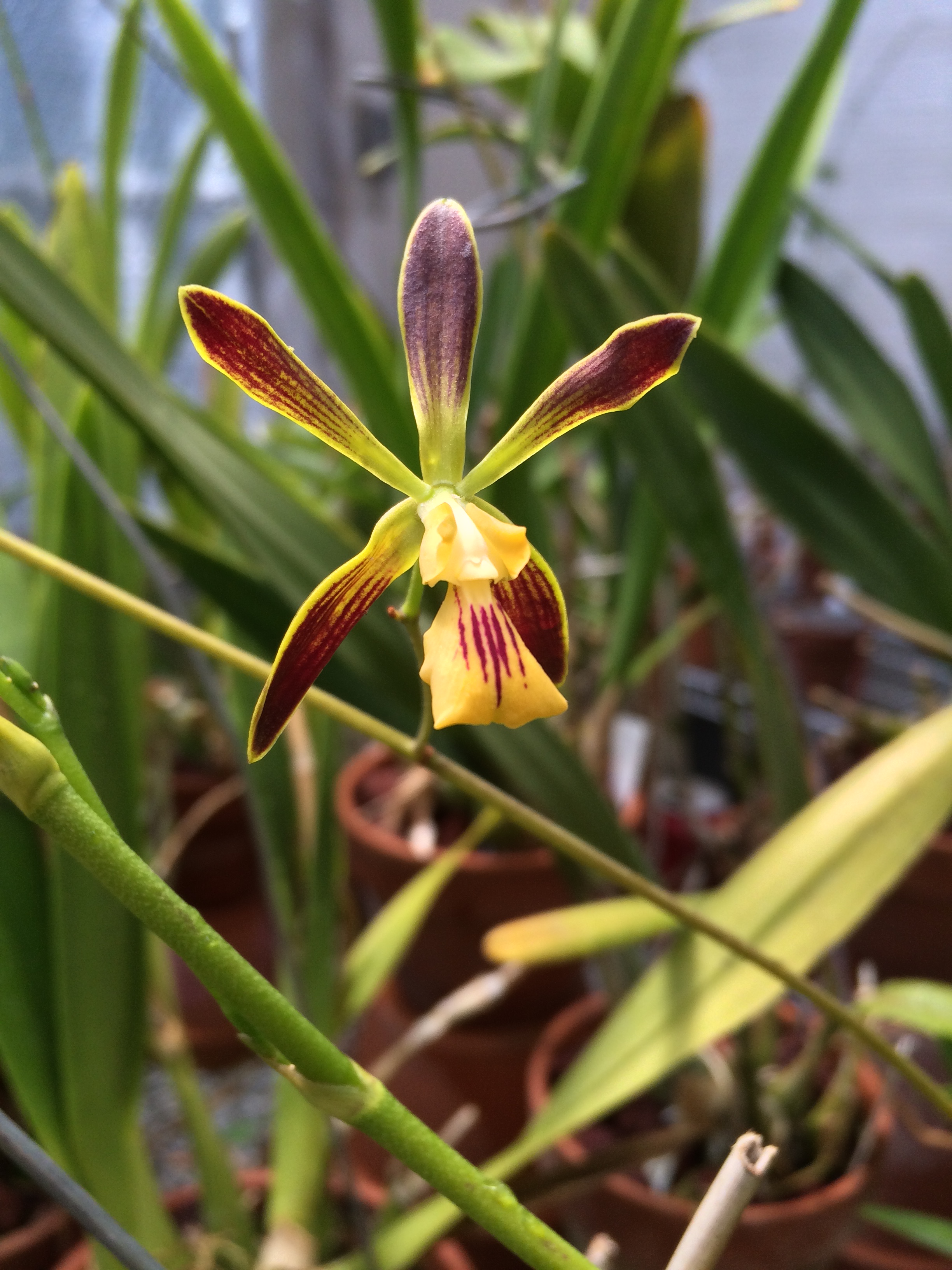
Encyclia bocourtii, also from Cuba, was described in 2005. To my eye, the flowers (or at least their color scheme) are reminiscent of the Central American E. alata, but it is surely more closely related to the other Cuban species.
Reference
Sauleda, RP, and Esperon, P, (2018). Artificial Self-pollination (Autofecundation) as a Taxonomic Tool – Encyclia phoenicea (Lindl.) Neumann. New World Orchidaceae–Nomenclatural Notes 34: 1-14. http://www.newworldorchidaceae.com/
Further reading
Although it lacks the more recently descibed species and natural hybrids, Carl Withner’s book is probably the most comprehensive text on Caribbean Encyclia species:
Withner, CL (1996). The Cattleyas and their Relatives: Volume IV. The Bahamian and Caribbean Species. Timber Press, Portland, Oregon.
Ruben Sauleda’s New World Orchidaceae website is a compendium of his research papers on orchids, including many fascinating tidbits on Caribbean orchids.
Up Next: Mexican and Central American Encyclia species

